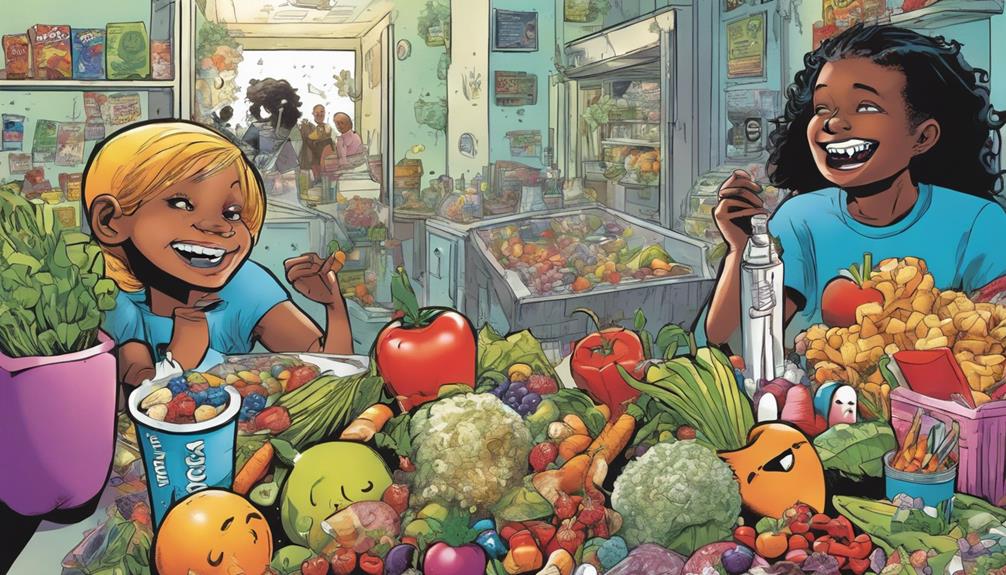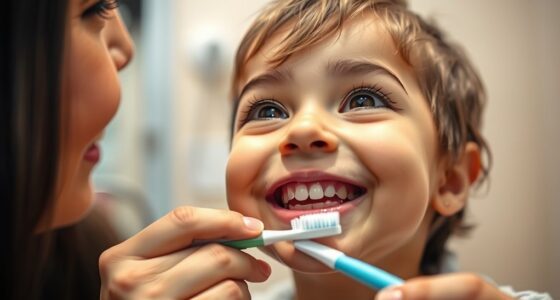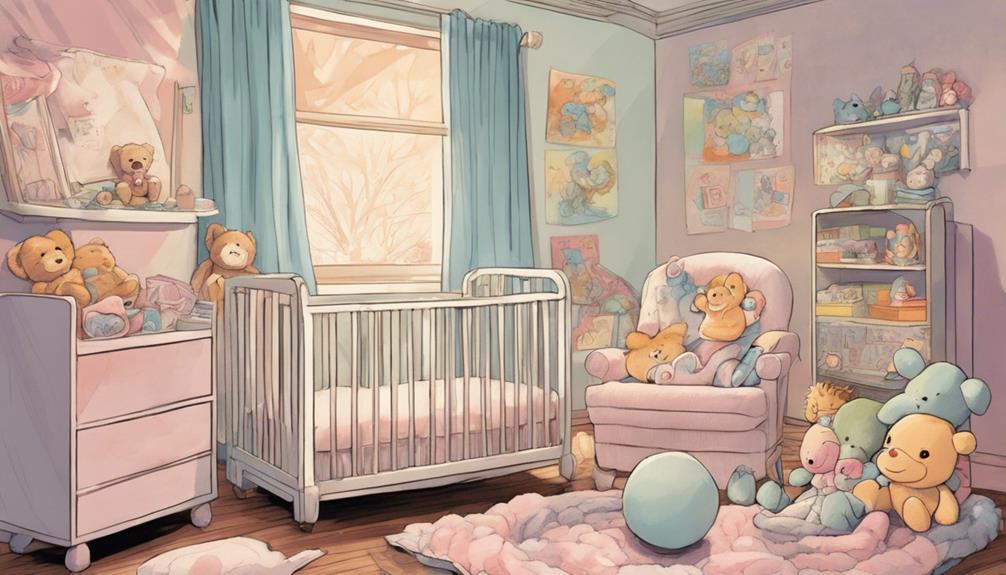Kids usually have 20 primary teeth by the age of three. These teeth include 8 incisors, 4 canines, and 8 molars. They help your child chew food properly and develop speech skills. The first teeth typically start to emerge around six months, beginning with the central incisors. By six years old, these baby teeth will start falling out, making way for permanent teeth, which will continue to come in until around age 25. You might find it interesting to learn about the shift from baby teeth to permanent ones and how dental care plays an essential role in that process.
Key Takeaways
- Children typically have 20 primary teeth by age three, which include incisors, canines, and molars.
- Primary teeth start to emerge around six months of age, beginning with the central incisors.
- Kids begin losing their baby teeth around age six, transitioning to permanent teeth.
- By age 13, most children have 28 permanent teeth, including their first molars.
Do Babies Have Teeth at Birth?
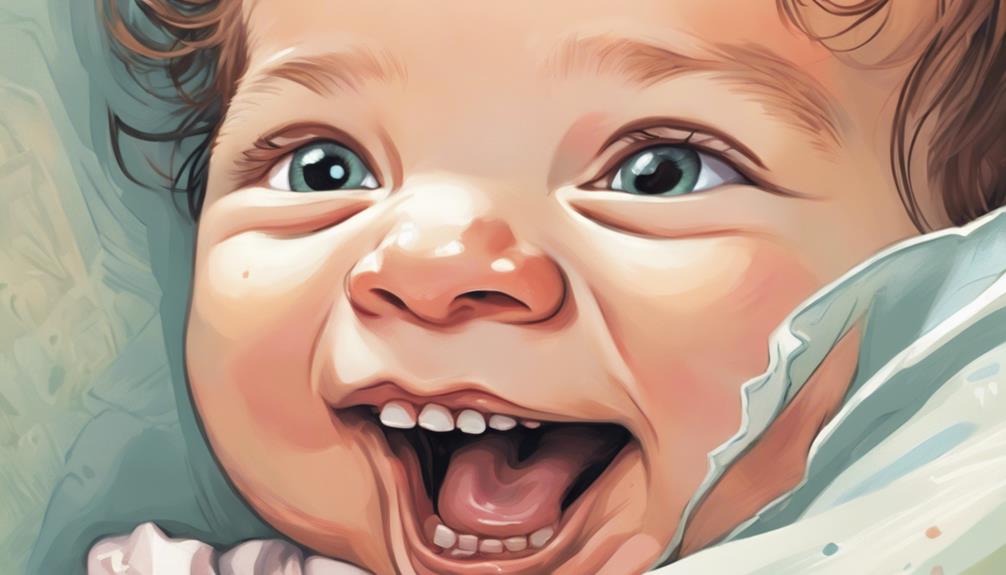
Most babies don't have visible teeth at birth, but they do have primary teeth developing beneath their gums. These primary teeth, often referred to as baby teeth, typically start to make their appearance around six months of age.
You might notice that your little one begins teething during this time, as those baby teeth come through the gums. The first to emerge are usually the central incisors, and this process can sometimes be uncomfortable for your baby.
Teething can lead to irritability, drooling, and a desire to gnaw on objects. It's essential to soothe your baby's discomfort while waiting for those first baby teeth to break through.
Number of Baby Teeth

Kids have a total of 20 baby teeth, with 10 in the upper jaw and 10 in the lower jaw.
These teeth usually start coming in around six months and are typically all present by age three.
Understanding the eruption timeline can help you keep track of your child's dental development.
Total Primary Teeth Count
A typical child has 20 primary teeth, which are vital for chewing and speaking. These baby teeth, also known as deciduous teeth, play an important role in a child's development.
The teeth chart shows that the primary teeth are evenly divided, with 10 located in the upper jaw and 10 in the lower jaw. These 20 primary teeth consist of 8 incisors, 4 canines, and 8 molars. Incisors, the front teeth, help with biting into food, while canines assist in tearing. The molars at the back are significant for grinding food down.
Typically, children begin to get their baby teeth around 6 months of age, and by the time they reach 3 years old, all 20 primary teeth should be in place. As children grow, they usually start losing these baby teeth around age 6, making way for their permanent teeth. This change is a natural part of childhood development.
Understanding the total primary teeth count helps parents track their child's dental health and guarantee their little ones are on the right path to a healthy smile.
Eruption Timeline Overview
Understanding the eruption timeline of baby teeth is essential for tracking your child's dental development. Typically, your child will have a total of 20 primary teeth, with 10 in the upper jaw and 10 in the lower jaw. The eruption usually starts around 6 months of age, beginning with the central incisors. Following this timeline, the lateral incisors, first molars, canines, and second molars emerge in that specific order.
By age 3, your child should have all 20 baby teeth in place, marking a significant milestone in their growth. It's important to know that around ages 6 to 7, these baby teeth will start to fall out as permanent teeth begin to replace them. This change is a natural part of dental development and can sometimes be a little uncomfortable for your child.
As you navigate this process, regular check-ups with a pediatric dentist can help guarantee everything is on track. They can provide guidance on oral hygiene and address any concerns you might have about your child's erupting teeth. Keeping an eye on this eruption timeline will help you support your child's dental health effectively.
Timeline for Permanent Teeth
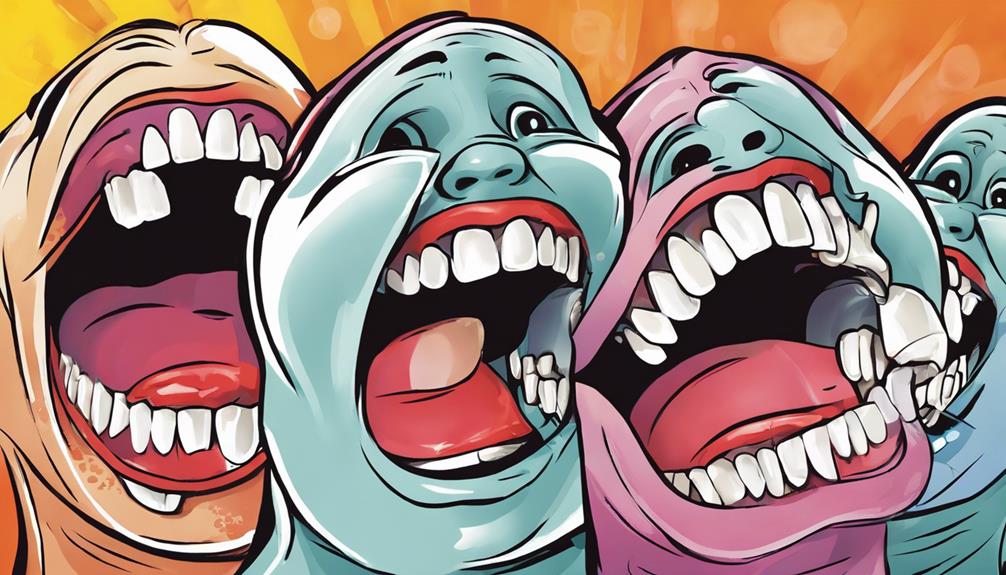
Permanent teeth start coming in between ages 6 and 12, gradually replacing the primary teeth that fall out. This timeline is essential for understanding your child's dental development. By age 13, most kids have 28 permanent teeth, which includes the first two molars. The last of the baby teeth usually make their exit by ages 12 to 13, paving the way for a complete set of 32 permanent teeth, including wisdom teeth.
Wisdom teeth, or third molars, typically emerge in late teens to early twenties. However, they often require removal due to lack of space in the mouth. The full eruption of permanent teeth can take about 6 to 12 months. Keep in mind that proper alignment may need additional time, as these teeth are larger than baby teeth.
Regular pediatric dental check-ups will help monitor this timeline and guarantee your child's teeth are coming in correctly. Being aware of these stages can help you support your child's oral health as they shift from baby teeth to permanent teeth.
Characteristics of Permanent Teeth

When you think about permanent teeth, you'll notice they've a unique structure and composition that sets them apart from baby teeth.
You'll find different types, like incisors and molars, each serving a specific purpose in your mouth.
Understanding the eruption process can help you track your child's dental development as they shift from primary to permanent teeth.
Structure and Composition
The structure of adult teeth includes 32 distinct teeth that play specific roles in chewing and speaking.
You'll find eight incisors, four canines, eight premolars, and twelve molars, which include the often-removed wisdom teeth. These adult teeth replace the 20 primary teeth, or baby teeth, that you lose as you grow.
Permanent teeth are larger and feature thicker enamel compared to primary teeth, making them more durable and resistant to cavities. This durability is fundamental for your lifelong dental health.
The development of adult teeth typically begins around age 6, continuing until about age 25 when most people have a full set of 32 teeth, although some may have fewer due to wisdom tooth removal.
Maintaining proper dental care is critical during this change. You should guarantee you're brushing and flossing regularly to keep your adult teeth healthy.
Types of Permanent Teeth
Understanding the types of permanent teeth helps you appreciate their unique roles in your mouth, as each type is specifically designed for different functions in the chewing process. Permanent teeth include incisors, canines, premolars, and molars, contributing to effective eating and digestion.
Here's a quick breakdown of each type:
| Type of Tooth | Number of Teeth |
|---|---|
| Incisors | 8 |
| Canines | 4 |
| Premolars | 8 |
| Molars | 12 |
Incisors are the sharp front teeth that cut food, while canines, situated next to the incisors, have a pointed shape to tear food. Premolars, located behind the canines, have a flat surface ideal for crushing and grinding, and molars at the back of your mouth are designed for further grinding and chewing.
Eruption Process Overview
Permanent teeth emerge through a fascinating eruption process that typically starts around age 6, marking a significant change in your child's dental development. This is when the first permanent molars, often called 'six-year molars,' make their entrance. As your child is around this age, you might notice that their baby teeth begin to loosen and eventually fall out, making way for these stronger, more durable permanent teeth.
Unlike baby teeth, which are smaller and whiter, permanent teeth are tougher due to their thicker enamel. This added strength means they're more resistant to cavities and decay, a vital advantage as your child grows. Each type of permanent tooth plays a specific role in chewing. Incisors help with cutting, canines are designed for tearing, and molars are perfect for grinding food.
This teething baby phase can be both exciting and challenging for you and your child. As permanent teeth come in, it's important to maintain good oral hygiene practices to set a solid foundation for your child's dental health. By age 25, they'll typically have a complete set of 32 permanent teeth, including wisdom teeth.
Functions of Different Teeth

Different types of teeth in a child's mouth each serve unique functions that are vital for effective chewing and eating. You have a total of 20 primary teeth, including incisors, canines, premolars, and molars. Each type plays a specific role in the chewing process.
Incisors are the most visible teeth at the front and are designed for cutting food. Typically, you have eight incisors, making them significant for biting into fruits and vegetables. Right next to them are the canines, which help tear food. You have four canines, and they're important for handling tougher foods like meats.
Moving further back, you find the premolars, which you have in two pairs, totaling eight. These teeth are primarily used for grinding and crushing food, helping to break it down before swallowing. Finally, the molars, the largest teeth located at the back, play a key role in chewing and grinding. You have eight primary molars, and they make sure your food is thoroughly processed.
Understanding these functions highlights how important each type of tooth is for your child's overall eating experience.
Baby Teeth Vs. Permanent Teeth
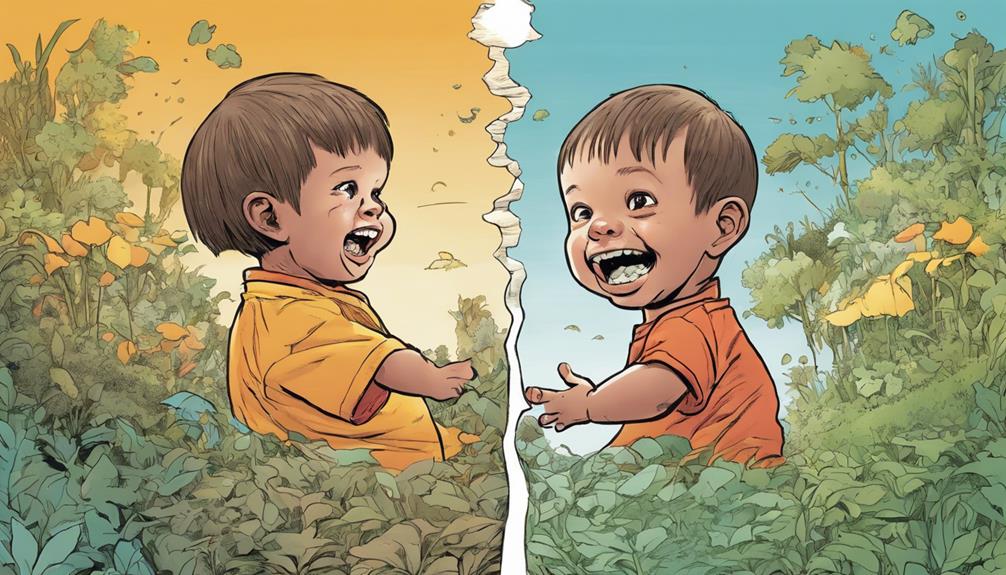
Kids typically have 20 baby teeth that they eventually lose as they grow, making way for 32 permanent teeth. These baby teeth usually start to come in between 6 months and 3 years of age.
As your child approaches around age 6, they'll begin to lose their baby teeth, starting the shift to permanent teeth. The first permanent molars, known as 'six-year molars,' are among the first to emerge, usually appearing behind the baby teeth.
While baby teeth are smaller and whiter, permanent teeth are larger and tougher, thanks to thicker enamel, making them more resistant to cavities.
It's essential for you to understand that the process of losing 20 baby teeth and gaining permanent teeth continues until your child reaches their late teens. The final set of permanent teeth, wisdom teeth, typically come in between the late teens and early twenties.
Sometimes, these wisdom teeth need to be removed due to space issues in the mouth. Knowing the differences between baby teeth and permanent teeth can help you support your child's dental health as they grow.
Dental Care for Children
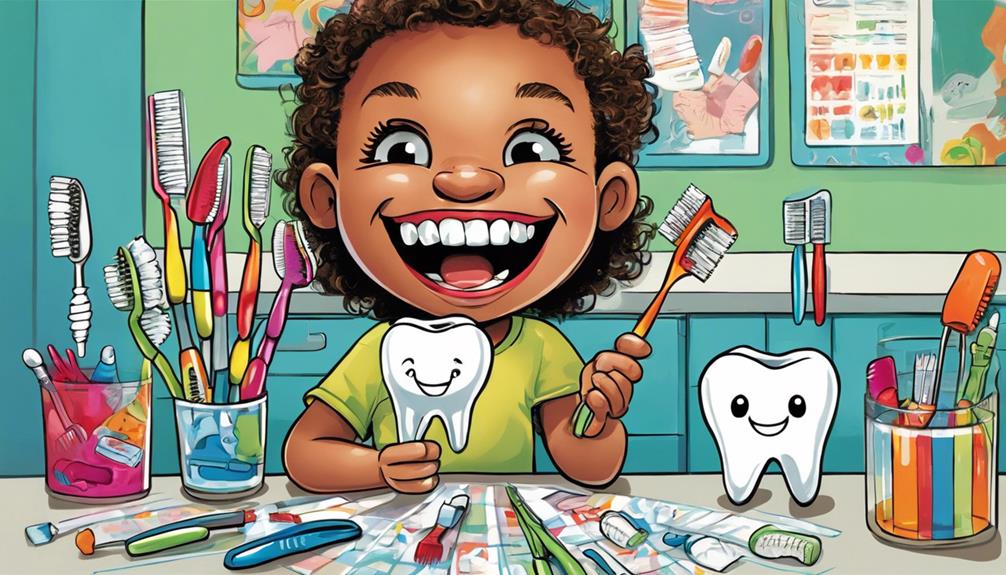
Establishing good dental care habits early on sets the foundation for a lifetime of healthy smiles. As soon as your child's first tooth appears—typically around 6 months—it's vital to start focusing on oral hygiene. Brushing with fluoride toothpaste helps prevent cavities and guarantees those little teeth stay healthy.
By age 1, or when the first tooth erupts, you should schedule your child's first dental check-up. This early visit promotes good oral health practices and allows a pediatric dentist to assess your child's teeth and gums. Pediatric dentists are specially trained to cater to children's unique dental needs, creating a friendly environment that makes visits enjoyable.
Regular dental visits are essential, as they help identify potential issues like tooth decay or misalignment before they become serious problems. Encouraging your child to develop a routine of brushing twice a day, along with regular dental check-ups, fosters strong oral hygiene habits.
Common Dental Issues

Maintaining proper dental care can help prevent common dental issues that many children face as their teeth develop. One of the most significant concerns is tooth decay, which is alarmingly common in children. Early childhood caries can lead to serious complications if not addressed promptly. To combat this, instilling good oral hygiene habits early on is essential; brushing twice a day and limiting sugary snacks can make a huge difference.
Misalignment of teeth can also become an issue, often stemming from habits like thumb sucking or the early loss of baby teeth. If you notice your child's teeth aren't aligning correctly, it may require orthodontic intervention later on.
Additionally, some kids experience tooth sensitivity, usually due to enamel erosion. This can cause discomfort and may require professional attention to prevent further issues.
Lastly, be aware of potential trauma from falls or accidents, as these can lead to chipped or lost teeth. Encouraging your child to wear protective gear while playing can help minimize these risks.
Teething Symptoms and Remedies

Teething can be a challenging time for both you and your baby, as they experience a range of symptoms that signal their new teeth are on the way. You might notice sore or red gums, flushed cheeks, increased drooling, and even a mild fever. These teething symptoms can lead to irritability and chewing behavior as your little one copes with the discomfort.
To soothe a teething baby, you can try chilled teething toys or cold washcloths. These provide soothing relief by numbing the gums, making it easier for your baby to handle the pressure of erupting teeth. If your baby seems to be in significant discomfort, you might consider teething medications like baby Tylenol, but be sure to consult with a healthcare provider before using any medication.
Another effective remedy is to gently massage your baby's gums with teething gel. This can help ease soreness and offer a bit of comfort. Remember, every baby is different, so it's important to find the best combination of remedies that work for your child during this tough phase.
Frequently Asked Questions
How Many Teeth Does a 7 Year Old Have?
At age 7, you might find your child has around 16 to 20 teeth. They've likely started losing some primary teeth, with new permanent ones beginning to erupt, marking an important dental change. As your child continues to grow and develop, they will experience more changes in their dental structure. It’s common for children to start losing baby teeth around this age, as their permanent teeth begin to push through. This is a natural process that signifies their transition from childhood to adolescence.
When a Child Has 24 Teeth?
When your child's got 24 teeth, it's like a mini dental revolution! This usually happens between ages 6 and 8, marking the exciting shift from primary to permanent teeth. Regular dental check-ups are essential during this time.
How Many Teeth Does a 12 Year Old Have?
At age 12, you'll likely notice your child has around 24 permanent teeth, having lost several primary ones. This change marks an important stage in their dental development, setting the foundation for adulthood.
How Many Teeth Will a Child Lose?
You might think losing teeth's a hassle, but it's a rite of passage! Your child typically loses 20 primary teeth, making way for that dazzling adult smile they'll proudly show off in years to come.
At What Age Do Kids Typically Start Losing Their Baby Teeth?
Children’s teeth falling out typically begins around the age of six or seven. This is when the baby teeth start to loosen and make way for permanent teeth to come in. The process of children’s teeth falling out varies from kid to kid, but it is a natural part of their dental development.
Is Teeth Whitening Safe for Kids’ Teeth?
Many parents wonder if light teeth whitening products are safe for their kids’ teeth. It’s important to consult a pediatric dentist before using any whitening products on children. Their teeth are still developing and may not react the same way as adult teeth. Always prioritize the safety and health of your child’s teeth.
Conclusion
In the grand adventure of growing up, your little one's mouth transforms from a toothless wonder to a dazzling display of pearly whites!
Imagine them flashing a grin with 20 tiny baby teeth, only to be replaced by a fierce army of 32 permanent teeth ready to conquer the world of chewing.
With proper care, those teeth will shine brighter than a thousand stars, making every smile a masterpiece.
So, buckle up for the wild ride of dental milestones ahead!

